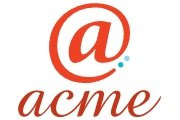Your resume is a document that speaks for you and along with the covering letter should be tailor made to a specific job. Resume is your showcase and the first tool to be used in marketing yourself. A perfect resume achieves the objective of getting you shortlisted for an interview and becomes a stepping stone for the dreamt job. A cover letter on the other hand creates the first and lasting impression about you. Both your cover letter and resume should compliment each other and together determine whether you will receive an interview call or not.
If you send your resume and cover letter through courier or post then adequate care should be taken to ensure proper printing or typing of the contents and points of importance should be highlighted with the use of bold dark print or a highlighter. In case where the internet is being used to send your cover letter and resume then you must follow proper net etiquettes.
Ideally a resume should be two pages long, well written and sans errors of any kind and cover letter should not be more than a page long, neatly written with summarization of capabilities in a few sentences.
A Curriculum Vitae (CV) is more elaborate than a resume but both terms are used interchangeably. A career portfolio is more specialized and can contain multimedia files.
One should seek professional help in creating a beautiful and interesting resume and make full use of the latest resources available on the internet as recruiters appreciate a resume in which information is systematically organized in clear cut sections and in a chronological order highlighting keywords that are relevant to the job being applied for, this ensures that your resume is appealing and rightly targeted.
Basically there are three types of resumes Chronological, Functional, Combination
1) Chronological resume is the more traditional structure for a resume. The Experience section is the focus of the resume; each job (or the last several jobs) is described in some detail and there is no major section of skills or accomplishments at the beginning of the resume. This structure is primarily used when you are staying in the same profession, in the same type of work, particularly in very conservative fields. It is also used in certain fields such as law and academia. It is recommended that the chronological resume always have an objective or summary, to focus the reader.
Advantages: May appeal to older more traditional readers and be best in very conservative fields. Makes it easier to understand what you did in what job.
Disadvantage is that it is much more difficult to highlight what you do best. This format is rarely appropriate for someone making a career change
2) Functional resume highlights your major skills and accomplishments from the very beginning. It helps the reader see clearly what you can do for them, rather than having to read through the job descriptions to find out. It helps target the resume into a new direction or field, by lifting up from all past jobs the key skills and qualifications to help prove you will be successful in this new direction or field. Actual company names and positions are in a subordinate position, with no description under each. There are many different types of formats for functional resumes. The functional resume is a must for career changers, but is very appropriate for generalists, for those with spotty or divergent careers, for those with a wide range of skills in their given profession, for students, for military officers, for returning homemakers, and for those who want to make slight shifts in their career direction.
Advantages: It will help you most in reaching for a new goal or direction. It is a very effective type of resume, and is highly recommended.
Disadvantages are that it is hard to know what the candidate did in which job, which may be a negative to some conservative interviewers
3) Combination resume includes elements of both the chronological and functional formats. It may be a shorter chronology of job descriptions preceded by a short "Skills and Accomplishments" section (or with a longer Summary including a skills list or a list of "qualifications"); or, it may be a standard functional resume with the accomplishments under headings of different jobs held.
Advantages: This combined approach maximizes the advantages of both kinds of resumes, avoiding potential "turn-off" of either type.
Disadvantage is that they tend to be longer resumes. Another is that they can tend to be repetitious - accomplishments and skills may have to be repeated in both the "functional" section and the "chronological" job descriptions.
Numerous variations and hybrid versions combine the Chronological and Functional, but these two basic formats, once mastered, will provide the guidelines for any resume. These two forms vary mostly in the way that they layout and prioritize work history information.
Whatever the type of resume it basically serves to highlight your suitability for a job in your absence and thus must be cogent, easy to read, neatly formatted and contain vital info about your personality in terms of career objectives, summary, work experience and academic achievements. Resumes must be free of shortcomings such as grammatical errors, poor presentation and disorganized data.
Before finalizing your resume check its size, format, presentation, contents, authenticity of information, language use etc. Do not include references and salary history unless specifically requested.
A good commanding resume makes you win half the battle the moment it is presented.
A Dua for the People of Gaza
1 year ago





No comments:
Post a Comment